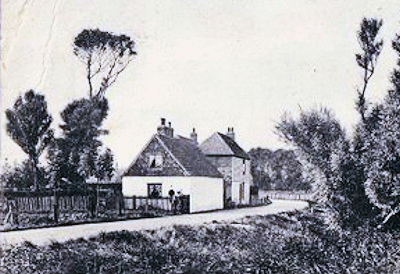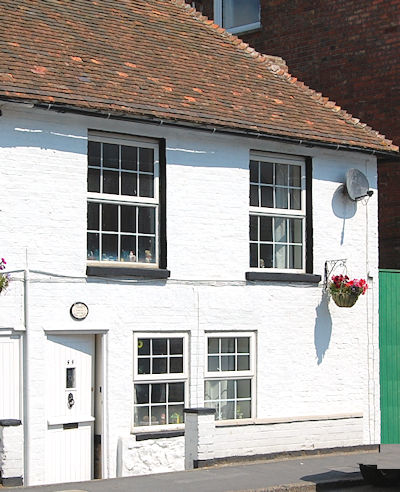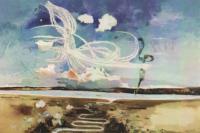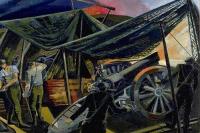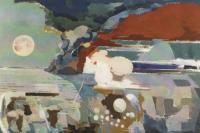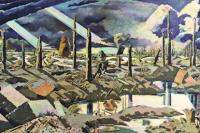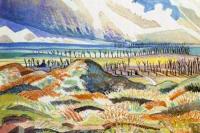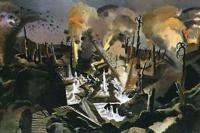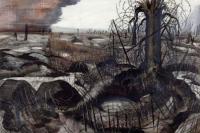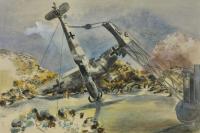Paul Nash
![]() Introduction
Introduction
![]() In Dymchurch
In Dymchurch
![]() War Artist
War Artist
![]() His Paintings
His Paintings
![]() Gallery of Paintings by Paul Nash
Gallery of Paintings by Paul Nash
Paul Nash was one of the most original British artists of the first half of the 20th Century, who lived and painted in Dymchurch for part of his life. Working in the tradition of William Blake and Samuel Palmer, his paintings express a deep, mystical attachment to the English countryside.
Nash was a surrealist painter and war artist, as well as a photographer, writer and designer of applied art. Nash was among the most important landscape artists of the first half of the twentieth century. He played a key role in the development of Modernism in English art.
Paul Nash was born in London on 11 May 1889. At the outbreak of World War I, Nash reluctantly enlisted in the Artists' Rifles and was sent to the Western Front in February 1917 as a second lieutenant in the Hampshire Regiment.
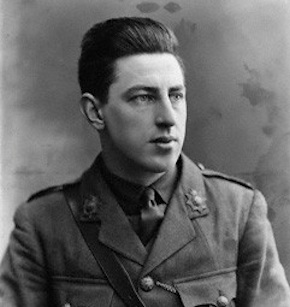
Paul Nash 1918 (Ack.18)
A few days before the Ypres offensive he fell into a trench, broke a rib and was invalided home.While recuperating in London, Nash worked from his front-line sketches to produce a series of drawings of the war. In 1921 Nash suffered a severe breakdown, diagnosed as ‘war strain.’
To recuperate he came to Dymchurch in 1920 with his wife Margart, where he first rented Dormers Dormer's Cottage in the High Street then moved almost next door into Rose Cottage. Nash stayed at Rose Cottage for a short while before, in 1922, moving to Pantile Cottage on the Hythe Road. He stayed there until 1925 when he moved to Iden
The couple first visited the area in 1919 shortly after the end of the war and Nash found it to be ‘a delightful place with much inspiring material for work’. He formed a strong connection to the place, and to the ancient landscape of nearby Romney Marsh. These subjects became a preoccupation in his work until 1925.
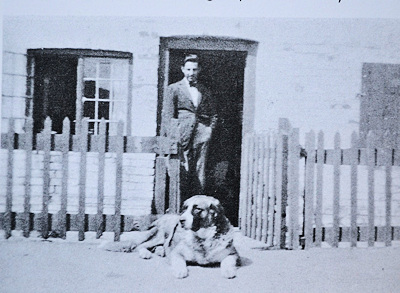
Paul Nash outside Dormer's Cottage c1921
Nash was impressed by the vast sea wall, the Dymchurch Wall, at Dymchurch, a man-made structure designed to protect the Marsh from flooding from the sea. For him, the wall became emblematic of the continuous interaction between land and sea.
Nash nearly drowned as a child and wrote that he associated the sea with ‘cold and cruel waters, usually in a threatening mood, pounding and rattling along the shore’.
Nash found that the coast at Dymchurch offered a naturally abstract landscape and during this period he began to incorporate abstraction into his work for the first time. In paintings such as Dymchurch Wall c1923 and The Shore c1923, Nash translated the sea and landscape into a series of interlocking planes and geometric shapes, influenced by Cézanne’s progressive fragmentation of nature.
He spent many hours walking alone on the wall after dark. In Dymchurch, 1922, the grey concrete of the sea wall is echoed in the greyness of the sea and sky and most of the Dymchurch series are imbued with a sense of emptiness and starkness, revealing the inconsequence of man in the face of the natural world.
In 1925 they moved to Iden near Rye, the artist was no longer inspired by Dymchurch, writing in his autobiography notes; “We find a home of our own in Iden, goodbye to Dymchurch”
He was an official war artist during Word War I, painting the scarred landscape of the Western Front where he had served as a soldier before being wounded. In the late 1920s he became interested in Surrealism and was particularly influenced by the paintings of de Chirico.
During World War II he was again appointed official war artist, this time painting the devastating effects of war on rural England.
Landscape From A Dream, 1936-8, and Totes Meer (Dead Sea), 1940-1, are two of his best-known paintings. The first features a hawk and a set of mirrors that distort the sense of reality. The second shows a dump of wrecked aircraft which resembles an undulating sea.
Nash was a fellow member with Harold Gilman of the short-lived Cumberland Market Group, an artistic group formed in the earl 20th century.
During the final ten days of his life Nash returned to Dorset. Nash died in his sleep of heart failure, as a result of his long-term asthma, on 11 July 1946 in Hampshire and was buried on 17 July, in the churchyard of St Mary the Virgin, Langley in Buckinghamshire.
In an autobiographical article written c1940, Paul Nash said of Romney Marsh:
I have stayed on Romney Marsh and have watched the eastern sky darken across the dyked flats to Dymchurch and the Channel towards the French
coast as the sun set at my back, and have noticed the strange unity of sea, sky and earth that grows unnoticed at this time and place
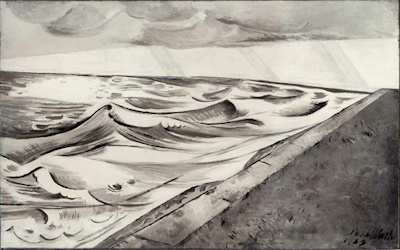
Dymchurch Seawall circa 1921
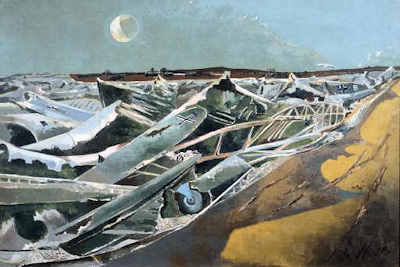
Totes Meer 1940-41
Nash was one of the few painters invited to produce a miniature painting for Queen Mary's Dolls House. He produced a tiny picture of Dymchurch Wall, which measures 1" x 1 1/2"
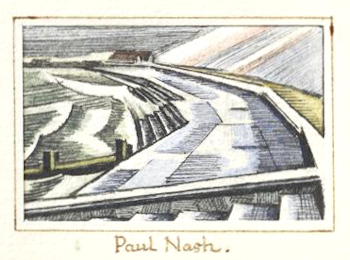
Painting for Dolls House
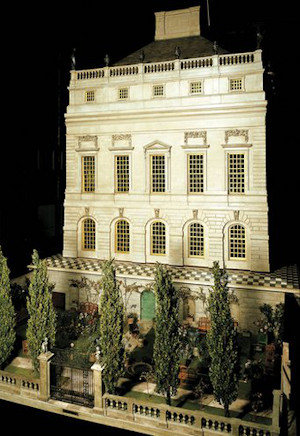
Queen Mary's Dolls House



















